Things to do in Saint George
Historic Saint George and its related fortifications are now a World Heritage Site designated by UNESCO. The architecturally rich, 400 year old town joins such select sites as the Great Wall of China, Statue of Liberty, Taj Mahal, and historic centre of Florence. The town is a delightful one in which to walk around. It has many narrow lanes leading away from the harbour, which were originally the footpaths to the houses. The dwellings are picturesque with their well maintained gardens, coloured by banana and paw-paw trees. There are horse-drawn buggy rides as a means of transport and a bus service runs to locations of interest such as Clearwater Beach, St David's Island and Fort St Catherine.
St George is located at the east end of the country and provides a pleasant and relaxed day's sightseeing. There is a slide show on the Parish, which may be of interest to visitors. A walking tour is a good way to explore the museums and quaint shops and one can meet the Town Crier along the way whilst stopping here and there to sample the fare at the charming restaurants.
The hub of town life is King's Square, featuring stocks, a pillory and a whipping-post where criminals were punished in days of yore. The Town Crier appears here on occasion, in traditional costume, to re-enact scenes such as committing the town drunk to the stocks and securing the town gossip on the Ordnance Island ducking stool. The Town Hall fronts the square, and behind it is one of Bermuda's oldest buildings, the State House, dating from 1619. Located close to this are art galleries and several museums. The Visitor's Service Bureau supplies maps and brochures about the town and provides an excellent walking tour of the old town.
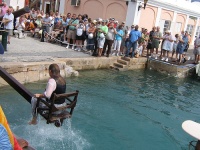
King's Square
Many attractions are located around King's Square where a beautiful 18th century town hall overlooks the old pillory and stocks. The hall is no longer in use but does provide great…
King's Square
Many attractions are located around King's Square where a beautiful 18th century town hall overlooks the old pillory and stocks. The hall is no longer in use but does provide great photo opportunities. Located close by is the dunking stool where gossips and petty offenders were forced to endure the humiliation of being dunked in the harbour. A few minutes walk from here is the Old State House, Bermuda's first all-stone structure and oldest building, dating to 1620. Originally known as Sessions House, it was the first permanent home of the colonial assembly, which until then, had held their debates in St Peter's Church.
Address Downtown, St George.
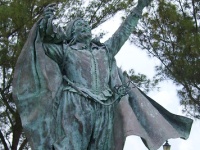
Somers's Garden
Located North of King's Square is Somers Garden, named after the colony's founder whose ship, , was wrecked off the island in 1609. Finding it a fairly nice place to be washed ash…
Somers's Garden
Located North of King's Square is Somers Garden, named after the colony's founder whose ship, , was wrecked off the island in 1609. Finding it a fairly nice place to be washed ashore, Sir George Somers built a replacement vessel from the local cedar, left some sailors behind to establish British claim to the islands and then headed home. He returned within the year but died shortly after arrival, leaving his heart, quite literally, on the island (his vital organs and entrails are in a small tomb in the Garden). The rest of his body, however, was sent back to England, as was customary at the time.
Address Government Hill Road.
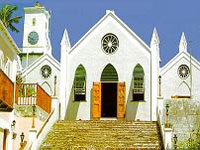
St Peter's Church
St Peter's Church is one of Bermuda's most cherished landmarks, and the oldest Anglican Church outside Britain. The original wooden structure was built in 1612 and its roof is that…
St Peter's Church
St Peter's Church is one of Bermuda's most cherished landmarks, and the oldest Anglican Church outside Britain. The original wooden structure was built in 1612 and its roof is thatched with palmetto. Among St Peter's many treasures are a mahogany altar, the St George's chalice that was presented in 1625, a Bible from 1594, Charles I silver, open cedar timber beams, beautiful chandeliers, and marble memorials to some of the Island's earliest governors. St Peter's served as the only public meeting place in Bermuda until the State House was built. The churchyard is also well worth walking around in, with tombstones telling stories of epidemics, shipwrecks and war.
Website www.anglican.bm
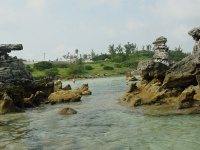
Somers's Wharf
Somers Wharf is steeped in the varied and vibrant history of St. George's. The Wharf has commanded a bird's-eye view of the Old Town's fascinating maritime past, situated on the pi…
Somers's Wharf
Somers Wharf is steeped in the varied and vibrant history of St. George's. The Wharf has commanded a bird's-eye view of the Old Town's fascinating maritime past, situated on the picturesque edge of St George's Harbour. Today, Somers's Wharf is a tastefully redeveloped area on the waterfront with a selection of shops and restaurants. The Carriage Museum has a collection of well-maintained carriages ranging from a dog-cart to a four-horse brake that ruled the roads until as recently as 1946 when cars were legalized. Situated nearby is Tobacco Bay, a good spot for swimming and snorkeling.
Address Pennos Drive, St George's Town.
Website www.somerswharf.com
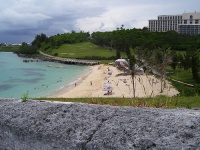
Fort St Catherine
On the northern tip of St George's Island is Fort St Catherine, overlooking the beach where Sir George Somers and his shipwrecked crew came ashore in 1609. Bermuda's first governor…
Fort St Catherine
On the northern tip of St George's Island is Fort St Catherine, overlooking the beach where Sir George Somers and his shipwrecked crew came ashore in 1609. Bermuda's first governor, Richard Moore, who was a carpenter by trade, built a wooden fort on this site several years later. Today it is a massive fortification complete with a moat, drawbridge, ramparts and a maze of tunnels. Fort St Catherine is now used as a museum containing period weapons, colourful dioramas, a wax figure of Queen Elizabeth II, and replicas of Britain's crown jewels. An audiovisual presentation focuses on the many forts located around Bermuda.
Address Retreat Hill Road



